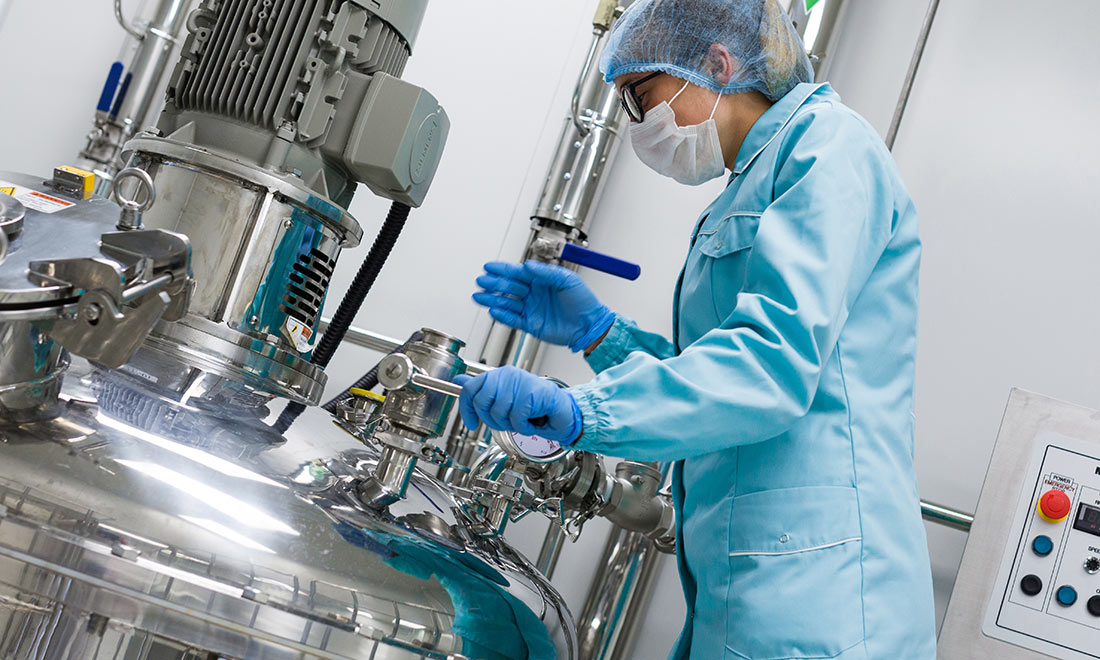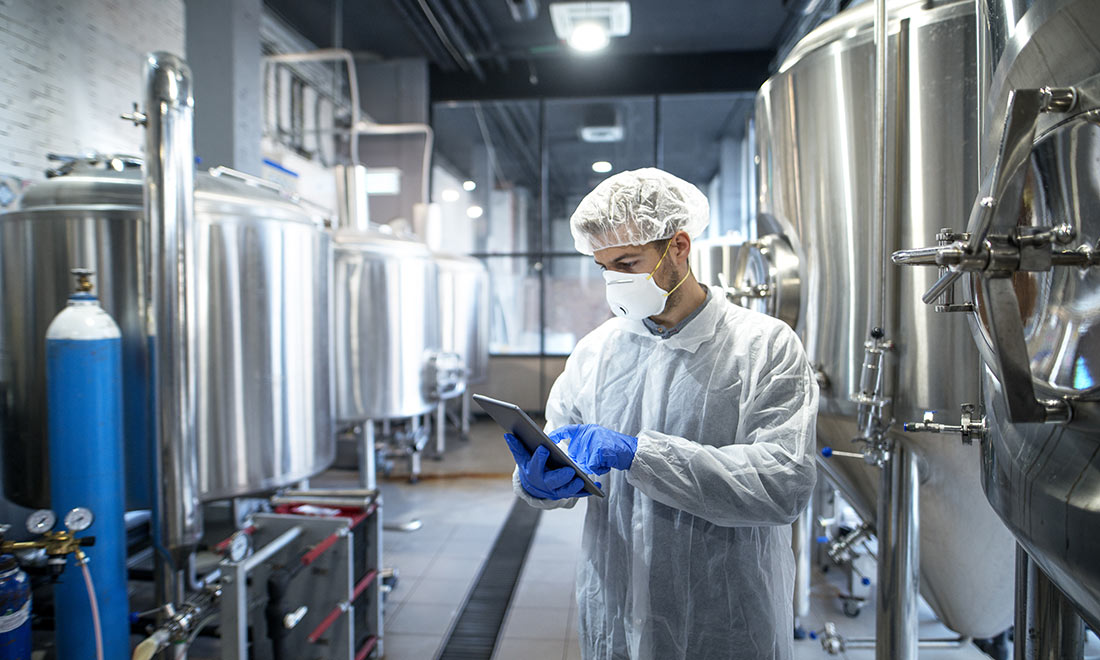- A global pharmaceutical company needed to transform training and enhance SOPs
- Using PTC’s Vuforia Expert Capture – an augmented expert guidance and training solution – they are creating work aides to accompany SOPs
- Improved work aides will streamline worker training, reduce errors and operating costs, and improve productivity
- The potential cost savings is estimated at $27M per factory
The Manufacturer: An Industry-leading Pharmaceutical Company
With billions in USD in revenue and thousands of employees, they are one of the world’s leading pharmaceutical companies. Their product portfolio includes many of the world’s best-known medicines and vaccines. Every day, their employees strive to set the standard for quality, safety and value in the manufacture of healthcare products across globally diverse markets.
Background: Paper-based SOPs Affecting Factory Productivity
Pharmaceutical manufacturing is rapidly increasing in complexity. This requires more intricate procedures, the need for effective training and more demand for knowledge retention from front-line workers. Lengthy standard operating procedures (SOPs) and “read-and-understands” are a core part of training, but to the new digitally inclined workforce, can seem redundant and difficult to follow. Introducing new technology is required to keep their workforce engaged, motivated and productive, but can prove challenging in a highly regulated, quality-driven environment.
According to the customer, new workers are tasked with learning 250 SOPs before being allowed on the factory floor. By having strong work aides to accompany SOPs, this allows workers to be trained more efficiently resulting in more confidence, greater knowledge retention, less training time, more productivity, and fewer errors. This global industry leader was looking for ways to improve productivity and reduce operating costs, especially around managing their thousands of SOPs.
The Challenge: Operator Error and Manual SOP Management
Biggest Challenges
- Capturing their technical experts’ knowledge
- Improving training and effectiveness of SOPs
- Reducing downtime and scrap due to operator error
Technical experts are in short supply, but their knowledge is in high demand. They are frequently pulled away from their core duties for new hire training and for troubleshooting upsets caused by operator error. As part of an industry with a high turnover rate, improving operator training can materially impact factory productivity.
Two factors made their processes more prone to operator error. The first was the difficulty to locate and update their thousands of SOPs in a timely fashion. And the other factor was the inherent difficulty in following paper-based SOPs for more intricate procedures like line clearance. These factors also contributed to increased downtime and scrap material.
The current methods for trying to capture expert knowledge and manage SOPs are inadequate – there are too many procedures and not enough context or knowledge retention to make the SOPs effective.

The initial driver of this project was reducing scrap around line clearances – when the vessels and piping are cleaned out for the next batch product. With frontline workers following paper-based SOPs for such a complex process, they typically end up scrapping 10% of their product yield, while executing slower and with room for improvement. These factors are costing the company millions of dollars in unrecoverable product and time.
To this end, their goals are to effectively capture expert knowledge, improve training, reduce operational errors and scrap, and find a better way to improve their thousands of SOPs with work aides.
The Approach: Tested Different Augmented Reality Software Solutions
This global pharmaceutical company started looking for guided instruction-type software, specifically using augmented reality (AR) or assisted reality. They compared a few different vendors, testing each on-site with their workers and innovation team.
Some of the criteria they look at were:
- Does it meet selected user requirements?
- How easy is it to set up and use?
- Does it improve knowledge retention?
- How effectively does it improve SOPs by increasing productivity and reducing errors?
- Could they be a partner to co-develop solutions to meet their company needs?
After trying out the different AR solutions, everyone agreed that PTC’s Vuforia Expert Capture was by far the best user experience. One of their experts said, “I can’t believe how easy this is.” They were up and running within 20 minutes.
Partnering with PTC, they started with production use case identification, discussed execution around hardware procurement and training, and came up with ideas on how to sustain and scale this solution within their organization
Use Cases: Where Vuforia Expert Capture Solution Adds Value
There are two use cases where this solution provides immense value:
- Augmented training: Providing refreshers for procedures, e.g. syringe pump cleaning that happen rarely but are extremely difficult to do.
- Augmented work aides for SOPs: Providing visual guidance for highly technical steps within frequently used SOPs.
These two use cases support the company on multiple facets – just-in-time operator training, better SOP management, more effective manufacturing and lab procedures – and empower their workers to get the job done right the first time.

The Solution: Vuforia Expert Capture Makes Everyone an Expert
Based on the initial results and PTC’s guidance, the industry-leading company started to roll out Vuforia Expert Capture along with 2D and 3D hardware for various processes.
Vuforia Expert Capture provides an easy way to extract tacit knowledge from experts and deliver that knowledge in a digestible format to less experienced individuals. The non-expert operator can then perform the exact same steps very quickly, and with the same level of knowledge and output as the expert. Previously, the way they tried to transfer knowledge was not scalable; this solution filled that void.
For example, there was only one worker in the factory that knew a specific procedure. Typically, it would take a long time to train someone to do it effectively, however Vuforia made it possible for others in the factory to learn the procedure quickly and accurately, through contextual step-by-step augmented reality-based instructions.
The drastically enhanced SOPs can then be viewed on Microsoft HoloLens devices.
Expected Results: Save Millions on Line Clearance Activities
In today’s world, the expert spends many, many hours teaching non-experts how to do the work. With Vuforia, once the expert captures the task with a wearable, it can be turned into a digestible format in less than an hour, making it possible to cut 50% or more of their training time.
In addition, the company spends hundreds of millions of dollars each year trying to recover from the impact of improper line clearance. With Vuforia, they are expected to deliver proper and repeatable clearing of each one of their lines. This will reduce the need to scrap batches. Therefore, with the aid of PTC’s AR technology, they will save millions on line clearance activities.
The Outcome: A Less Stressful Workplace with Higher Productivity
It’s stressful when you can’t find the right SOP, and even worse when a simple mistake results in improper line clearance. Following a paper-based SOP for complex procedures like line clearance is prone to error. Technical experts are frequently called to help solve these types of problems. This global pharmaceutical company has found a better way to train workers and capture expert knowledge to minimize operator error.
With Vuforia Expert Capture currently being used at six different sites, the customer is beginning to demonstrate that SOPs can be improved. Adoption has been quick, due to Vuforia’s intuitive user experience. After implementation, they expect to reduce operating costs, streamline worker training, and make better use of their process experts’ time. Based on their testing, they will improve productivity and reduce costs that will potentially save $27M per factory.